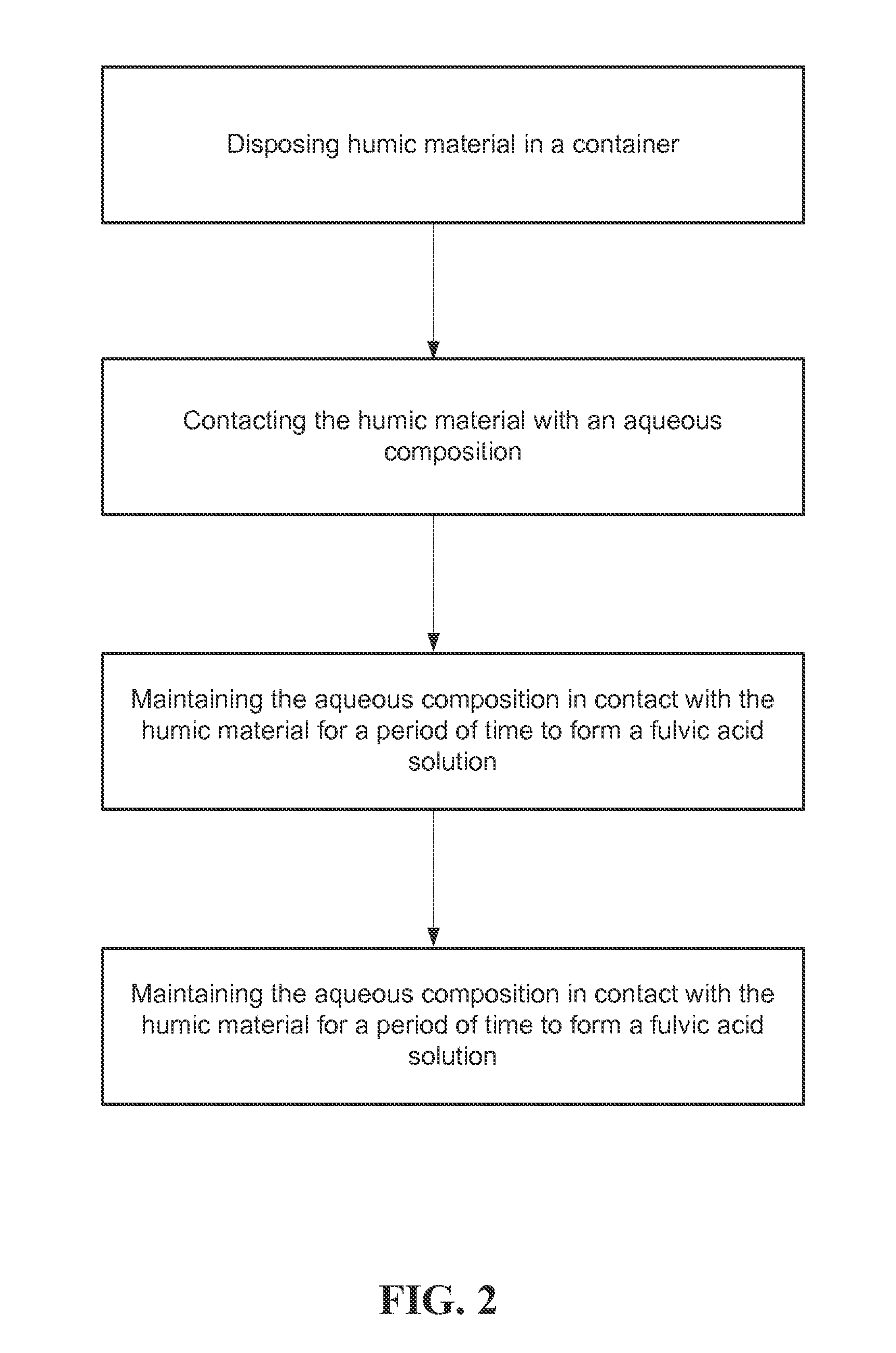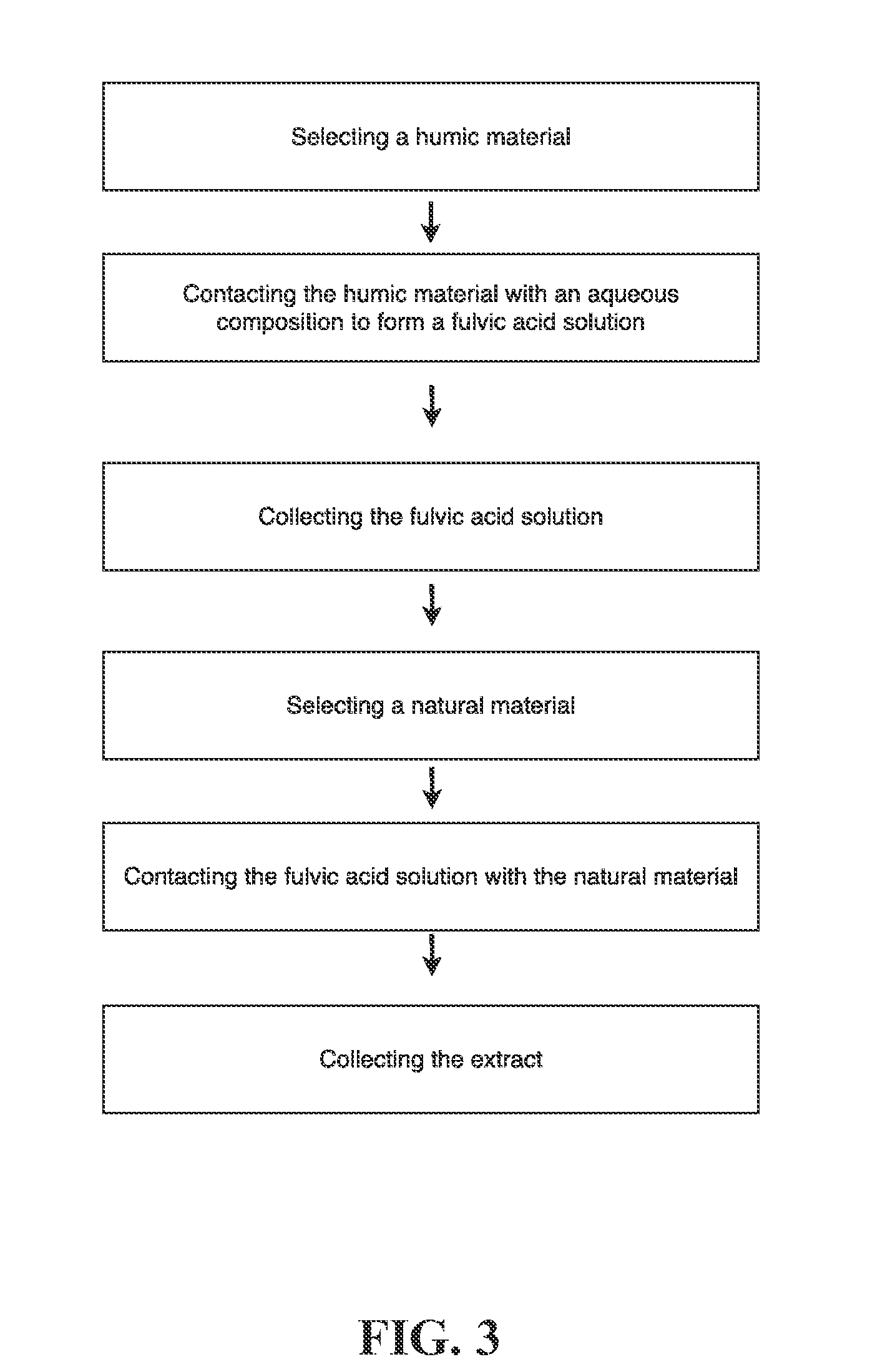Plant and Animal Extracts and Related Methods
a technology related methods, which is applied in the field of plant and animal extracts, can solve the problems of undesirable loss of beneficial properties, inability of most people to consume the quantity of these materials to achieve the desired effect, and not all extraction methods are capable of adequately extracting all of the desired beneficial components
- Summary
- Abstract
- Description
- Claims
- Application Information
AI Technical Summary
Problems solved by technology
Method used
Image
Examples
example 1
Extraction of Fulvic Acid From Humic Material
[0039]A fulvic acid solution that can be used in accordance with embodiments of the present disclosure is prepared in accordance to the following procedure. A large container (e.g. 55 gallon stainless steel drum or vat for human grade product or a plastic drum or vat for agriculture grade product) is filled with humic material. Water, such as distilled water, is poured over the top of the humic material and allowed to pass over and through the shale. Additional water is added daily and allowed to percolate over and through the shale. The effluent liquid collects in the bottom of the container and can be collected. The specific gravity of the effluent liquid is measured using a hydrometer (reference substance distilled water). If the desired specific gravity is not high enough, all or a portion of the effluent liquid can be re-poured over the humic material and allowed to percolate over and through the shale. In the event that the specific...
example 2
Extraction of Fulvic Acid From Humic Shale
[0040]A fulvic acid solution that can be used in accordance with embodiments of the present disclosure is prepared in accordance to the following procedure. A large container (e.g. 55 gallon stainless steel drum) is filled with 300 pounds of humic shale that has been dried and cured for a period of 1-2 years. A gallon of water (e.g. distilled water) is poured over the top of the humic shale daily for a period of two weeks and allowed to pass over and through the shale. The effluent liquid collects in the bottom of the container and is collected. The specific gravity of the fluid is measured using a hydrometer (reference substance distilled water) and is determined to be about 70. The fulvic acid solution is collected and stored for future use. In one aspect the fulvic acid solution can be diluted to a lower specific gravity, e.g. 50, or 15.
example 3
Extraction of Fulvic Acid From Lignite
[0041]A fulvic acid solution that can be used in accordance with embodiments of the present disclosure is prepared in accordance to the following procedure. A large container (e.g. 55 gallon stainless steel drum) is filled with 450 pounds of lignite. One to four (1-4) gallons of water (e.g. distilled water) is poured over the top of the lignite daily for a period of 10 days and allowed to pass over and through the shale. The effluent liquid collects in the bottom of the container and is collected. The specific gravity of the fluid is measured using a hydrometer (reference substance distilled water) and is determined to be about 50. The fulvic acid solution is collected and stored for future use.
PUM
 Login to View More
Login to View More Abstract
Description
Claims
Application Information
 Login to View More
Login to View More - R&D
- Intellectual Property
- Life Sciences
- Materials
- Tech Scout
- Unparalleled Data Quality
- Higher Quality Content
- 60% Fewer Hallucinations
Browse by: Latest US Patents, China's latest patents, Technical Efficacy Thesaurus, Application Domain, Technology Topic, Popular Technical Reports.
© 2025 PatSnap. All rights reserved.Legal|Privacy policy|Modern Slavery Act Transparency Statement|Sitemap|About US| Contact US: help@patsnap.com



